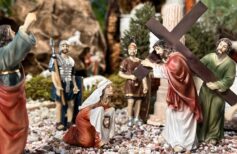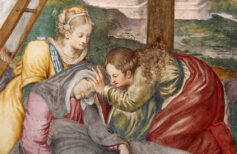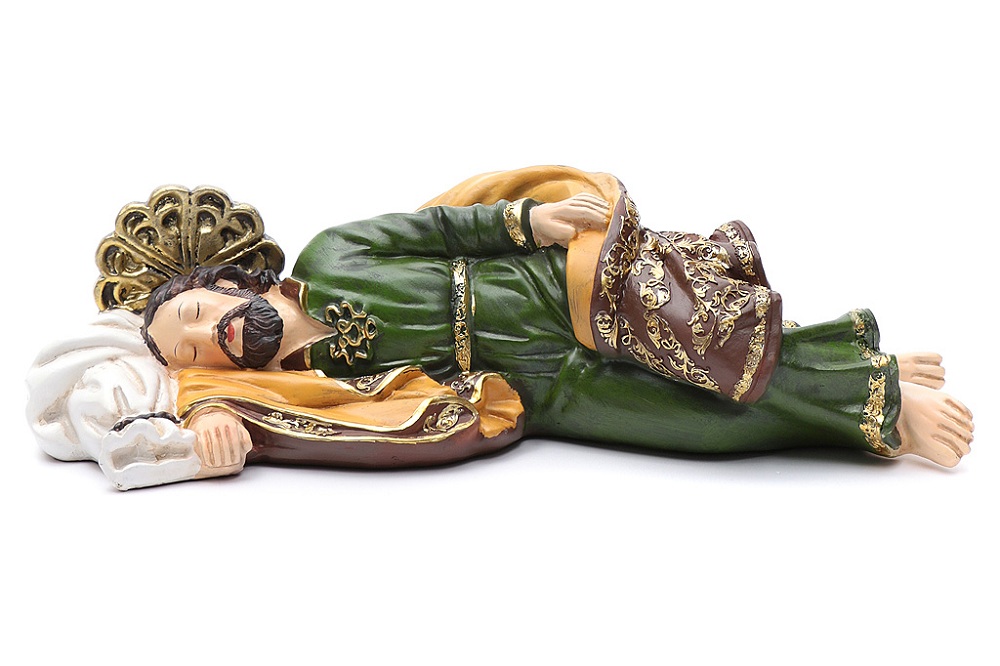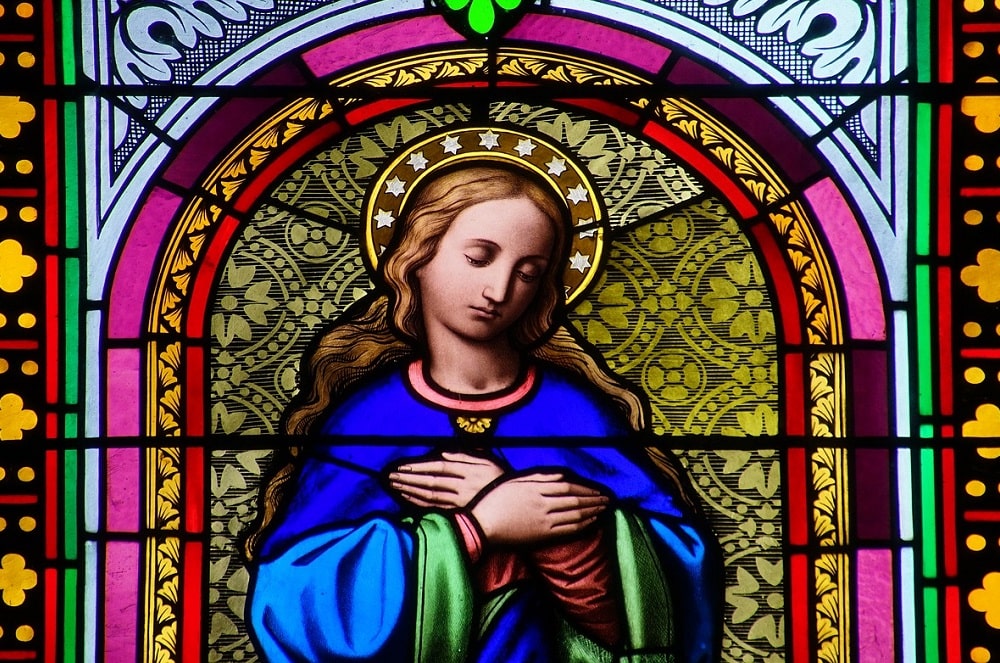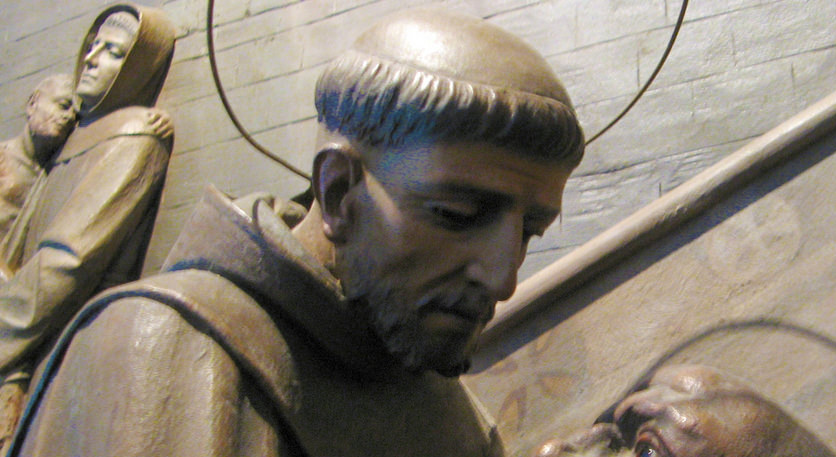What was the role of women in the history of Salvation? Let us discover the relationship of Jesus with the disciples of the Gospel
Contents
A more incisive female presence in the Church. This was the wish of Pope Francis already in 2020, in his prayer intentions for the Angelus of 11 October. The Pontiff’s intention was to integrate women more closely in any decision-making context and in the institutions of responsibility in the Church, claiming their equality with men as baptized, albeit secular. The Pope had already spoken in 2018 about the need to respect women, as Jesus respected them, who: «[Jesus] “dignifies” the woman and puts her at the same level of man, because she takes that first word of the Creator: both are “image and likeness of God”, both; not first the man and then, a little lower, the woman; no, both […] The man alone without the woman next to him – both as mother, as sister, as bride, as work partner, as friend – is not the image of God».
These words of the Pope help us to introduce a broader and more delicate topic, namely the relationship of Jesus with women, the way in which he related to the female world in general and the role of women in the Bible. We speak of his disciples, of those women who followed Jesus in His movements, who listened to the preaching and who took care of Him and the apostles. More generally, although the Old and New Testaments are masculine, it is true that there are many figures of courageous women in the Bible, of complex and fundamental women for the fulfilment of the divine plan, as and more than men. There are many figures of women who have influenced the history of the church and the world, including women in the Bible, saints, mystics and women illuminated by grace.
Returning to the women who followed and loved Jesus, Anna Katharina Emmerick in her visions on the Passion of Christ, in addition to countless details not reported in the Gospels, cited the presence of at least seventeen women close to Him, the existence of which is confirmed by other sources. Remaining with the episodes related to women in the Gospels, we all know well the figures of the pious women at the foot of the cross, who witnessed the death of Jesus on the Cross, described in different ways in the various canonical Gospels, but the presence of which is not questioned by any of the Evangelists. For Matthew and Mark, it was two women named Mary (Mary of Magdala, Mary mother of James and Joseph, or perhaps Mary of Cleophas), and another woman with an uncertain identity. Luke speaks of women in a generic way, while John is much more precise, and speaks of the Virgin Mary, mother of Jesus, of Mary of Cléofa, her aunt and Mary Magdalene, the “penitent” of Magdala.
Mary Magdalene herself was later called “an apostle among the apostles” because she was the first to announce the Resurrection to the other apostles of Jesus, and the “evangelist”, as the bearer of the Good News. And if Luke about the three pious women does not go into too much detail, in other situations is perhaps the most feminist among the evangelists, given the role of primary importance that reserves to Elizabeth, mother of John the Baptist and relative of Mary, Mary herself and her mother Saint Anne at the beginning of her Gospel story.
In view of Women’s Day we want to pause for a moment on a short gallery of the disciples of Jesus. It was above all He who always showed himself close to the women in the Bible, who wanted them at his side and treated them as equals, even deciding to show himself to them first, after the Resurrection.

Maria Maddalena
Who was Mary Magdalene? Mary Magdalene was one of the many people healed by Jesus, who had freed her from seven demons who persecuted her. She was also called Mary of Magdala. In some Gospels, Apocrypha states that Mary Magdalene was indeed the wife of Jesus, but there is no reliable evidence of this. There is no doubt, however, the very strong bond that united them, such as to make Magdalene an important figure as the Apostles. There is also a Gospel of Mary Magdalene, in which she appears as the beloved disciple of the Lord, the depositary of the great divine plan and of a higher teaching that God would have entrusted to her alone.
Certainly the role of this woman alongside Jesus goes beyond the affection and caring devotion of Martha of Bethany (Tamar) or the enthusiasm and desire to learn of her sister Mary (Miryam). Mary Magdalene was the first to whom the Risen Christ appeared on Easter morning, and addressed her by name. Just as the Virgin Mary was chosen by God to bear His Son, Mary Magdalene was chosen by Jesus as the first depositary of the mystery of His Resurrection.
Martha and Mary sisters of Lazarus
Among Jesus’ friends stood Lazarus, who was resurrected from the dead, and his sisters, Mary and Martha. Luke in his Gospel characterizes the latter very much, offering us two portraits of women very different from each other, even if united by their devotion and love for Jesus. Martha takes care of Christ, looks after him as a brother, as a family, with care and dedication. Mary follows him, sits at His feet, venerates Him, listening to what comes out of His lips. Contemplation on the one hand, gestures and practical actions on the other, but on the basis of love for Jesus. The desire to please and care for him with food, warmth, tranquillity, and the love of a family. The example of Martha, Mary and Lazarus of Bethany, the silent and faithful friend and the loving and devout disciples of the Gospel, is a call to mercy and charity nourished by love.
For centuries it was believed that the sinner in the Gospel, the prostitute who would wash Jesus’ feet with her tears and dried with her hair in the house of Simon the Pharisee (Lk 7:36-50) could be Mary Magdalene or Mary of Bethany. Only recent studies have confirmed that it was a third woman who had nothing to do with the other two, except for the fact that Mary, sister of Martha and Lazarus, anointed Jesus’ feet with expensive oil and dried them with her hair (John 12:1-8). In any case, Jesus has always shown the utmost respect and kindness even to women considered ‘lost’, impure and forced to do degrading work.
Samaritan at the well
The episode of the Samaritan woman is told in the Gospel according to John (Jn 4,4-26). Jesus was travelling from Judea to Galilee, and as he passed through Samaria he stopped to rest by a well. Soon after, a local woman arrived. There was no good blood between the Jews and the Samaritans, but Jesus kindly turned to her and asked her if he could give her some water from the well. Astonished by so much kindness the woman asked her reason, and Jesus answered her: «If you knew the gift of God and who is he who tells you: “Give me to drink!” you would have asked him yourself and he would have given you living water» […] «Whoever drinks of this water will thirst again; but whoever drinks of the water that I will give him, will never thirst again, indeed, the water that I will give him will become in him a spring of water that gushes for eternal life».
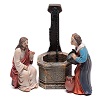
The episode of the Samaritan woman at the well highlights Jesus’ desire to offer salvation not only to the pure Jews and to upright and destitute men and women, but to anyone who could welcome and appreciate her with a heart full of faith. Water itself is a symbol of salvation and the New Covenant.
The bleeding woman
Among the many healings attributed to Jesus in the synoptic Gospels, there is also that of the bleeding woman, a woman who for years suffered from haemorrhage. Taking advantage of the crowd that was crowding Jesus who was going to the house of Jairus, head of the synagogue, he approached him and stealthily touched him behind. Immediately recovered. Jesus turned and asked who had touched him, and when she, fearful, was revealed to him he did not mistreat Jesus but confirmed to her that her faith had saved her.
Also in this story emerges how Jesus was close to those who were considered not pure, also for reasons independent of his will, and exalts the healing power of faith.


